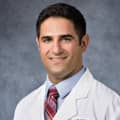Both nonsurgical and surgical treatment options may be used to treat anterior cruciate ligament (ACL) knee injuries. Although surgery is sometimes necessary, not everyone who has an ACL injury is a candidate for surgery.
In This Article:
Nonsurgical Treatment Options for ACL Tears
Immediately after the injury, management consists of the RICE method:
- Rest. Activities that cause knee pain, such as running or walking for long periods of time, should be avoided until symptoms are relieved.
- Ice. A person may be advised to apply ice packs to the area to help reduce pain and swelling. Ice packs can be applied several times throughout the day for about 10 to 20 minutes at a time.
- Compression. Swelling can be managed by wearing a tight, elastic bandage around the affected knee.
- Elevation. Keeping the knee supported above the waist may help with swelling.
Active individuals who plan to engage in activities or sports that do not involve sudden stops or turns, such as cycling and swimming, and those who do not have knee instability that affects their daily lives may be candidates for nonsurgical treatment. A person may be advised to:
- Wear a knee brace, which provides stability and restricts side-to-side knee movement. A functional sports knee brace, which allows for more movement, may be recommended when a person returns to activity.
- Take non-steroidal anti-inflammatory drugs (NSAIDs), such as ibuprofen or naproxen.
- Work with a physical therapist, who can help restore knee range of motion and increase knee strength.
See Treating Acute Sports and Exercise Injuries in the First 24 to 72 Hours
Recovery time will vary for each person and can take anywhere from a few weeks to a few months. Not all ACL injuries can fully heal with nonsurgical treatment. People who wish to return to pre-injury sports or vigorous activities may decide to have ACL surgery.
Platelet Rich Plasma and Stem Cell Treatment
PRP uses the patient's blood to repair damaged tissues like cartilage, tendons, ligaments, and muscles.
While some providers may suggest platelet rich plasma (PRP) or stem cell injections for ACL tears, their ability to speed up ACL healing in partial (Grade I or II) tears is unclear.1Chahla J, Cinque ME, Mandelbaum BR. Biologically Augmented Quadriceps Tendon Autograft With Platelet-Rich Plasma for Anterior Cruciate Ligament Reconstruction. Arthrosc Tech. 2018;7(11):e1063-e1069. Published 2018 Oct 1. doi:10.1016/j.eats.2018.06.011. Moreover, there is currently no support for these treatments in complete ligament ruptures. Lastly, while long-term studies have not been performed, there may be a role for these treatments in the prevention of post-traumatic arthritis after an ACL injury.
- 1 Chahla J, Cinque ME, Mandelbaum BR. Biologically Augmented Quadriceps Tendon Autograft With Platelet-Rich Plasma for Anterior Cruciate Ligament Reconstruction. Arthrosc Tech. 2018;7(11):e1063-e1069. Published 2018 Oct 1. doi:10.1016/j.eats.2018.06.011.







